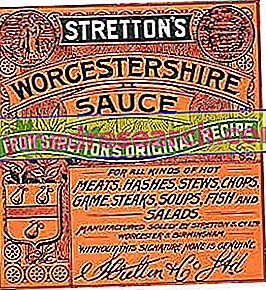Watch the video
X Watch the video on youtubeBy Dr. Andrea Bondanini
Importance of proper nutrition
The main rule is very simple:
there are no foods that can win a race, but there are many foods that can make you lose .

We must first of all remember that everything we introduce into our organism must serve simultaneously:
- like gasoline (calories),
- as protection (vitamins, minerals, fibers, antioxidants),
- for thermal regulation (drink water and that contained in food),
- for the continuous maintenance of the worn pieces (the proteins with their essential amino acids that allow the continuous renewal of the tissues).

The human engine needs a mixture of macronutrients (carbohydrates, proteins, fats) with preferential percentage ratios to work best.
Then, let's immediately specify which should be the most appropriate mixture for any human being (sedentary or sports does not make much difference, if not for the smaller or greater quantity of mixture, while its percentage composition is similar).
At least 50-60% of the calories needed by each of us must come from the carbohydrate group, no more than 30% from the fat group and the remaining 10-20% from the protein group.
Since the human engine is very complex, it also needs "protective" elements (vitamins, minerals, etc.).

The muscles of the athletes consume a mixture of carbohydrates and lipids that varies in percentage according to the workouts performed and the intensity of the exercise: at the beginning of the exercise carbohydrates are consumed, in the purely aerobic exercise the muscles mainly use fats, while with the increasing intensity of work an increasingly rich mixture of carbohydrates is consumed.
Carbohydrates
The combustion of glucose (the simplest form of carbohydrates that will pass into the blood after digestion) produces energy (4 calories per gram of sugar) in the cells of the human body and, as an easily disposable waste, water and carbon dioxide.
Carbohydrates are the foods that supply man the basis of nutrition all over the world, or at least half of the calories that are needed, every day, to pay for the expense of being alive and that, much more expensive, of moving and to run.

Where are the carbohydrates found?
Especially in vegetable foods: in cereals (bread, pasta, rice, corn, etc.), in legumes (beans, chickpeas, lentils), in tubers (potatoes), in fruit and vegetables (sugar for example comes from the processing of cane or beet).
But also, among foods of animal origin, in milk (lactose 5 g per 100 g of milk) and, logically, in honey. In drinks (juices, coca-cola, chinotti, etc.) and even more in sweets!
Simple sugars and complex sugars
The distinction of carbohydrates into "simple" and "complex" concerns the rate of assimilation, that is the time it will take to be digested, then "dismantled" and reduced to elementary molecules (glucose, fructose and galactose) capable of passing through the intestinal wall and to get into the blood.
The carbohydrates of legumes, pasta, bread or rice (all rich in starch, a very long and complex molecule that our enzymes must shorten in digestion) are complex, and therefore slower in digestion.
The simple carbohydrates of honey or sugar (sucrose) with which we sweeten coffee, fruit or juices are considered to be simple and rapidly absorbed carbohydrates.
The glycemic index indicates how quickly the organism metabolizes a food, based on a scale in which pure glucose has a value of 100.
Foods with a high index (such as bread and cereals that are consumed at breakfast) are digested more quickly and make the sensation of hunger felt earlier, while those with a lower index burn slowly and cause a more lasting sense of satiety.
Furthermore, adding fiber to each meal (vegetables) will slow down the body's glycemic response.
Foods with a high glycemic index in practice make the body produce more insulin; this hormone removes the sugars from the blood making them enter the cells and reduces the lipolysis, causing a lower availability of free fatty acids: the lowering of the blood sugar creates the sensation of hunger.
So the ideal thing would be to eat complex carbohydrates, which are often those with the lowest glycemic index, so as not to risk an early onset of hunger.
The fructose contained in the fruit causes a very low insulin response, not only does it not reduce the level of circulating fatty acids, but rather favors their utilization, thus saving a part of the muscular supply of sugars, represented by glycogen.
In the past, many athletes used a dissociated diet to increase muscle glycogen stocks on race day: after a maximal workout, able to eliminate muscle glycogen stocks, only fat and protein diet days followed and three more intakes just carbohydrates.



